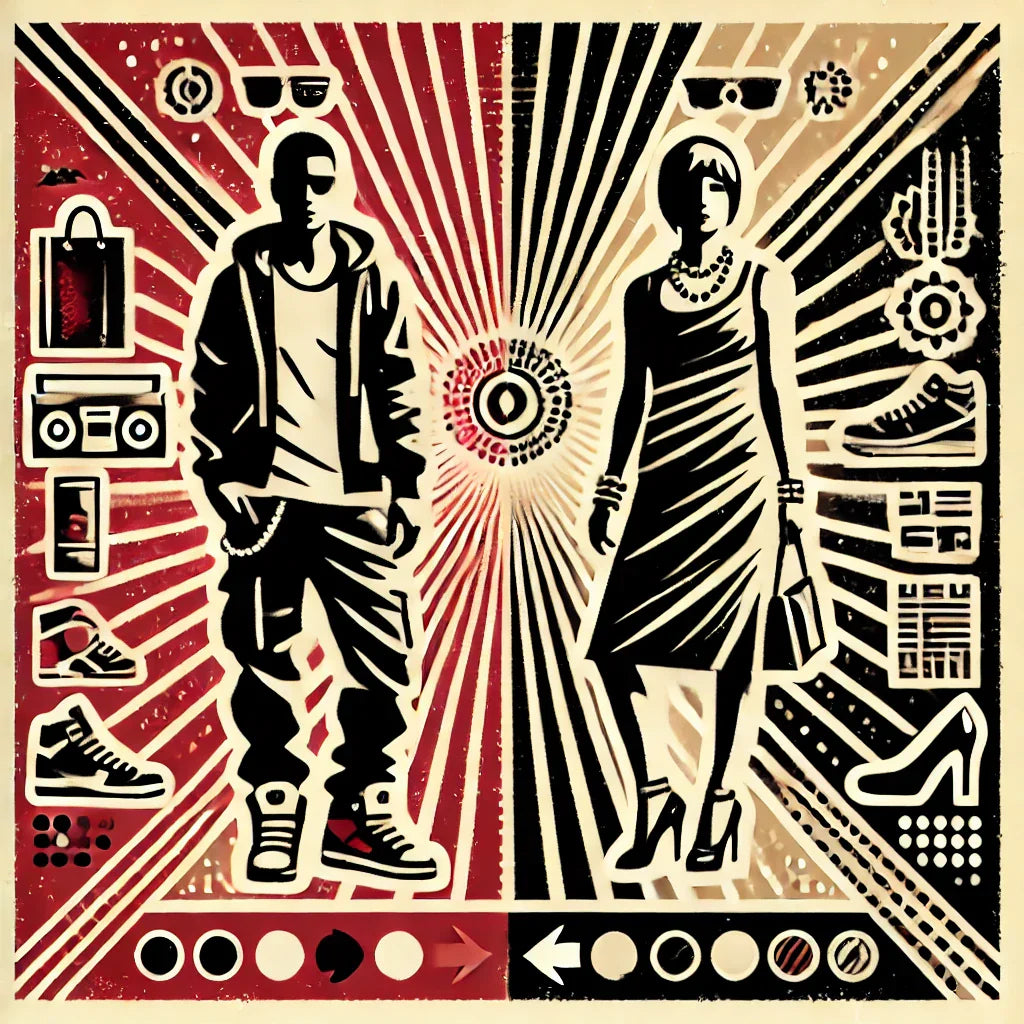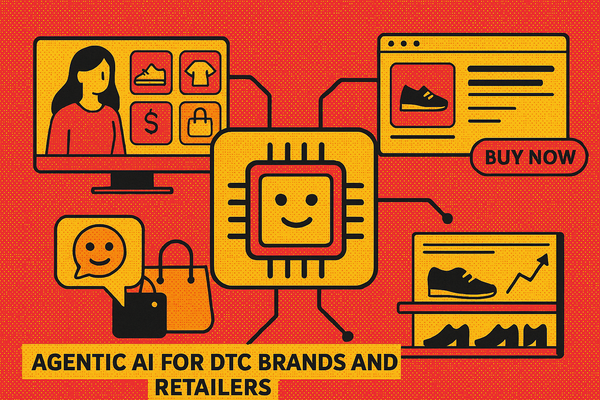Let’s start with style personalization. The idea is simple: align the site experience to the styles a shopper actually browses and buys, so the home page feels like it was designed for them. The lookbook swaps. The product grid tilts. The copy speaks their language. Relevance becomes the new luxury.
And the lowest hanging fruit in style personalization is gender based. No matter your identity or pronouns, it is safe to say you shop either men’s styles or women’s styles (or both). That preference is the first big signal a brand can use to make a site feel instantly more relatable. Because at the end of the day, no one, ever, has said “I need some new unisex jeans.”
Yet most brand home pages still look like a department store mannequin: same outfit, same pose, same for everyone. That is a missed opportunity. The second you know, or can even predict with confidence, whether a visitor leans male or female, you can restyle the entire front door. Suddenly the site feels personal.
Why Are Brands Still Behind?
A/B testing tech has been around since the MySpace era. For 20 yrs this functionality has been available and proven to impact CRO, Revenue, CAC, LTV / Repeat / Loyalty, EBITDA and virtually all other key metrics. Offermatica and Optimizely let brands test copy and imagery back in the early 2000's . Yet here we are, and most home pages still look like they were frozen in time. Why?
-
Siloed ownership: Marketing owns imagery, merchandising owns assortments, product owns the tech stack. Nobody wants to lead, so personalization dies in committee.
-
Data doubts: Brands assume their data is not clean enough. Spoiler: probability scoring is more than good enough to start.
-
Clunky tech: Legacy CMS platforms make personalization expensive and awkward.
-
Short term thinking: Leadership wants campaign spikes, not infrastructure that compounds.
-
Brand-first bias: Most home pages reflect what the brand feels is new or differentiating, not what the shopper actually needs. Without agile product management structures that balance business priorities with customer requirements, the UX tilts toward vanity instead of conversion.
Meanwhile, customers are trained by Netflix, Spotify, and TikTok to expect personalization everywhere. When your home page still looks like it was printed in 2010, shoppers notice.
Why Gender Signals Work (If You Use Them Right)
Gender is not the whole story, but it is often the clearest early signal. A men’s jacket on the hero image feels relevant to one group and invisible to another. A women’s accessories promo sparks with one set of shoppers and misses entirely with another. Even tone matters: “built to perform” versus “made to shine” can change the way people move through your site.
When the home page mirrors the visitor’s preferences, bounce rates drop, time on site stretches, and conversion lifts. It is like swapping a generic playlist for a personal DJ.
How to Read the Signals
AI gets sharp when it reads patterns like a stylist reads a closet. The data is already there:
-
Purchase history: Shoes and jackets are like receipts from past styling sessions.
-
Browsing behavior: The digital equivalent of trying things on in the fitting room.
-
Campaign engagement: Which promos spark clicks, which get scrolled past.
-
Location and device quirks: Extra hints that add texture, even if not definitive.
AI does the heavy lifting by weighting these signals dynamically. It is not about hard rules, it is about learning the rhythm of each shopper.
Quick and Dirty Ways to Start
Not every brand has a machine learning squad waiting in the wings. The good news: you do not need one to start.
-
Rules based personalization: Shopify Plus and Magento can serve gendered home pages based on recent clicks or campaign sources.
-
Personalization plug ins: Nosto, Dynamic Yield, Monetate. Off the rack, but effective.
-
CDPs with AI baked in: Segment, Bloomreach, and friends connect browsing and order data to spit out gender probabilities without you writing code.
These can launch in weeks. Even a basic A/B test between gender specific versions will prove the lift.
When You Want to Go Couture
Rules based personalization is a starter jacket. But the runway is waiting for couture.
-
Machine learning classifiers: Models that score gender preference based on browsing sequences, affinities, and engagement patterns.
-
Real time swaps: Tools like Adobe Target or Salesforce Einstein flip imagery, modules, and copy instantly.
-
Cross channel sync: Extend personalization across email, SMS, and ads so the shopper sees one consistent story.
-
Layered personalization: Stack age, geography, or spending power on top of gender for a true custom fit.
This is where personalization stops being a feature and starts being your competitive edge.
The Business Case: Sharper Fit, Bigger Impact
This is not a vanity project. Gender based style personalization moves numbers.
-
Conversion rate: Think custom tailoring versus off the rack. Expect lifts of 8 - 15%.
-
Net sales: On a $200M business, that lift means $16M - 30M in incremental revenue.
-
CAC efficiency: Same ad spend, more buyers. Effective acquisition costs drop, freeing budget.
-
EBITDA: With a 10% contribution margin, that $16M - 30M means $1.6M - 3M in EBITDA. Because it rides on existing traffic, the profit lift is outsized.
-
LTV and loyalty: A relevant first impression creates stickier customers. A 5 - 10% lift in repeat rates builds value, since those repeat buyers usually come back through low cost channels like direct or email.
The effect compounds: higher conversion, lower CAC, better margins, and stronger loyalty. Your P&L gets sharper, leaner, and better fitted.
Cost and ROI Reality Check
The quick and dirty route using Shopify rules, plug ins, or CDPs with built in AI usually costs tens of thousands per year in licensing and creative. The couture route with custom ML models, real time personalization engines, and cross channel orchestration can hit the low to mid six figures with engineering and data science included.
Even at the conservative end of the lift, 8% on a $200M business, the 'quick and dirty' path pays back in weeks. The 'couture build' costs more but still multiplies ROI once EBITDA gains climb into 7-figures. Both the starter jacket and the bespoke suit deliver returns your CFO cannot ignore.
Final Word
Most brands still treat the home page like a static billboard. AI turns it into a dynamic storefront, changing outfits based on who walks in. Start simple, then scale. Rules today, models tomorrow.
Gender-based personalization for the e-commerce UX is not about labels. It is about relevance. And in a market where every click is a runway walk, relevance wins.




0 comments